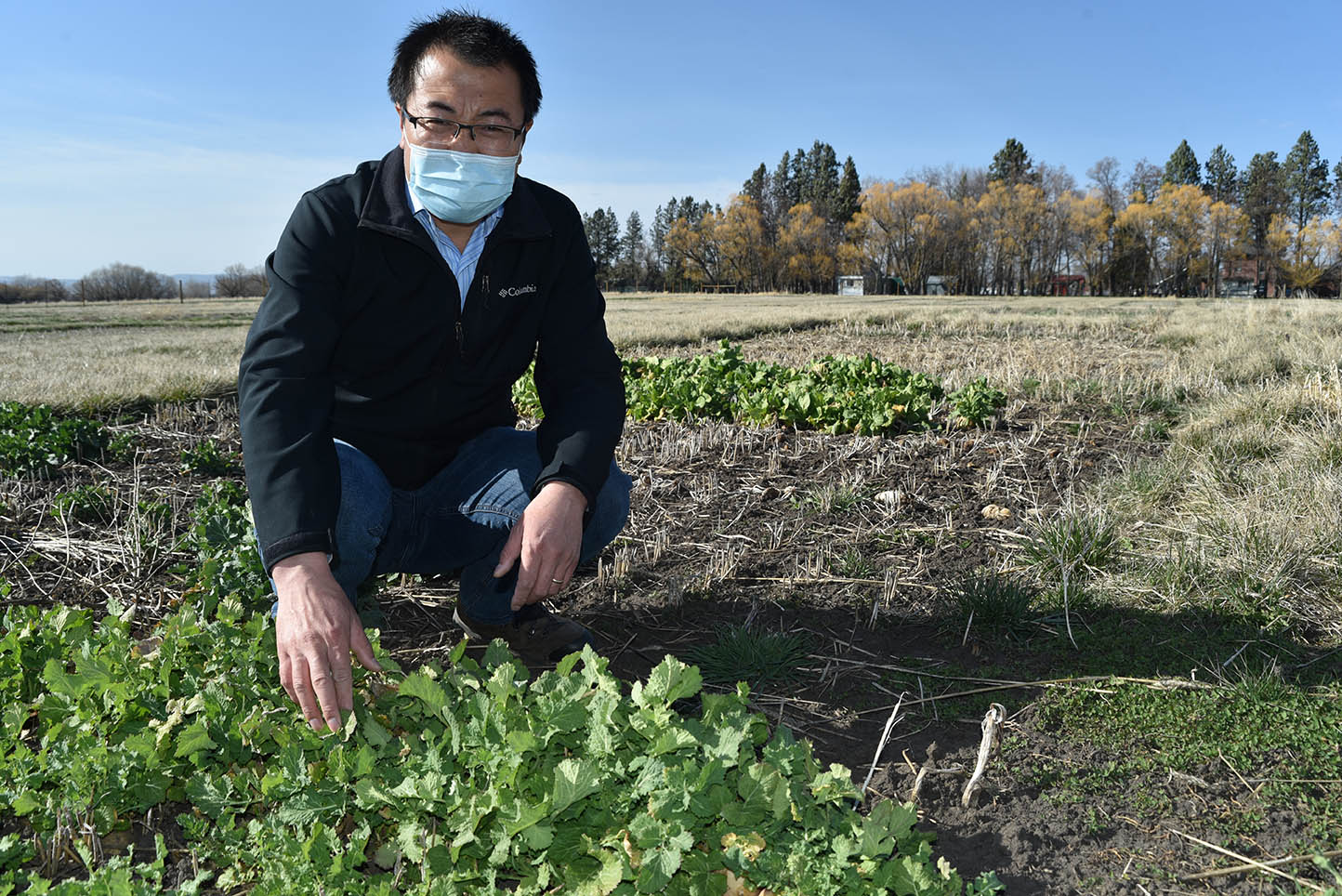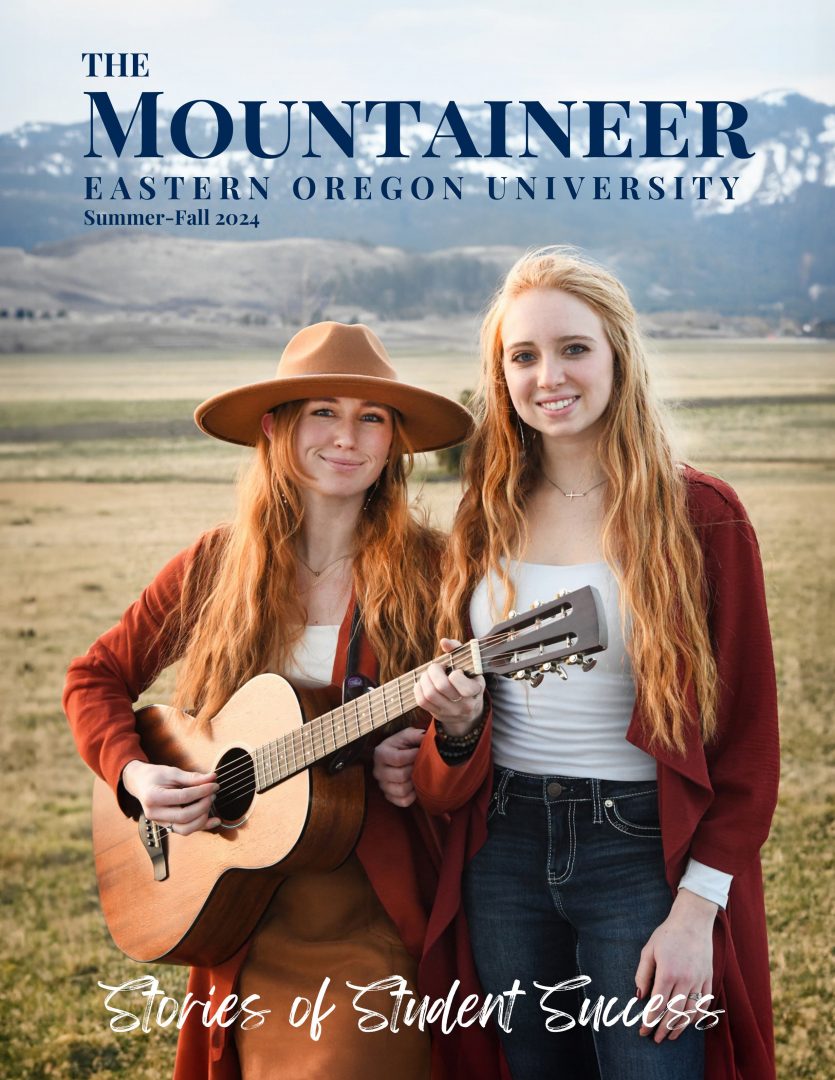Growing up, Growing better

From a few acres of land in rural China, Guojie Wang’s parents grew nearly everything they needed to support their family of four. If they needed oil for cooking, they grew sunflowers. If they wanted to eat tofu, they grew soybeans. Without heavy equipment or high-tech analysis, they provided nutrients for their sons and enough profit to cover Wang’s tuition.
He left the farm to study ecology and then natural resource management, in hopes of improving the lives of his parents and others like them.
“I graduated debt-free, but my parents’ life is very hard,” Wang said. “What’s the big deal if I get a degree, but my parents still have to suffer? So I study how to manage those farms with less labor or higher profit.”
Wang is a forage agronomist who teaches Crop and Soil Science at Oregon State University (OSU) in La Grande. EOU houses faculty and courses from OSU’s College of Agricultural Sciences on campus at EOU so students from the rural areas of the state have access to experts like Wang.
His research, conducted at the OSU Experiment Station in Union, explores how to grow forage for livestock with less water than conventional methods. Increasing ecological restrictions on water use from local streams has strained agricultural needs in recent decades, and Wang hopes to provide a sustainable solution.

The Catherine Creek watershed is home to a variety of fish, Wang explained, and if any threatened or endangered species are listed, based on Endangered Species Act landowners will have very limited access to their water sources. In-stream water flow and temperature in summer have the biggest impact on aquatic life.
“In order to conserve these species, we aim to use less water for agriculture in summer, however, this region would be impossible to farm in summer without irrigation,” Wang said. “So we try to use water more efficiently than before.”
He hopes to develop viable ways for agricultural producers to use less water to grow more or the same amount, or at least achieve neutrality between agriculture and conservation efforts.
Wang’s research began in 2016, and he plans to complete the first phase of projects this year and move to the second phase next year. Although the eight trials he’s run so far show significant effects, making an impact will take more than raw numbers.
“Adoption for this system is not just data,” he said. “It’s other social and economic factors, too.”
Before Wang embarked on this work, he interviewed local farmers and ranchers to identify industry needs and priorities. The results reinforced his assertion that growing forage, or feeding material, is the No. 1 cost for livestock producers in this region.
“A cow eats roughly 30 pounds of hay a day,” Wang said. “We need a lot of forage, but at the same time we do not have a lot of water.”
Wang and fellow researchers host field tours each summer for farmers to visit the Experiment Station to see the plots and demonstrations. Last year’s visitors were most concerned with the costs and effort required to implement Wang’s low-water strategies.
“You cannot continue to draw water from this watershed, but producers want to keep doing what they’re doing right now,” Wang said. “My dad does the same thing. I hope the producers can be proactive and respect the data, and make some changes. I’m trying to demonstrate this is a true alternative, not a fantasy.”
Wang’s parents have commercialized since he moved to America. The diversity of their farm has dwindled, and they don’t eat hardly any of what they grow.
“I’m a rural farmer’s kid who is now teaching in America: I am the American Dream,” Wang said. “I went from a small farm in China doing everything by hand, to heavily equipped, big farms in America.”
Wang plans to publish the results of his five-year study in a scholarly journal after analyzing the 2021 growing season data.
The Ground We Walk On
“We touch soil almost every day,” said Crop and Soil Science Professor Goujie Wang. “Out here, no matter where you work, you will touch the soil for sure.”
And it’s worth doing right every once in a while.
“The first thing to do is feel it,” Wang said. “Soil is a soft, porous medium.”
He talks about soil like it’s his favorite pet: living and breathing and just asking to be cared for.
“Soil will present all the things plants need,” he said. “Human beings don’t need to add very much to the soil to support industry. Fifty years ago there were no pesticides or fertilizers, and the world still produced a high quantity and quality of food.”
He recommends even casual gardeners test their soil regularly. Think of it like a wellness check-up or a blood draw to make sure everything looks good, and proactively respond to potential problems.
“Soil is a living, soft, fertile resource… show you care by doing an annual check,” Wang said.
Organic matter is the key to almost everything in soil. Add those leaves and little roots back to it to nurture a rich humus layer.
“Humus is a glue to keep the soil healthy and functional,” Wang said. “Improve it, and the soil will do it back to you.”
Mostly, though, leave soil alone. It’s more stable and resilient than most people give it credit for.
“Soil is a reliable natural resource for our foundation as a community and country,” Wang said. “This is the energy for human beings. Of course you can destroy soil by pushing the boundary to where it breaks, but it’s resilient and will come back. After a wildfire, flood or severe drought, the soil always will come back if we don’t break that threshold—just like the community did not break with the pandemic. We will bounce back—we have the capability.”
